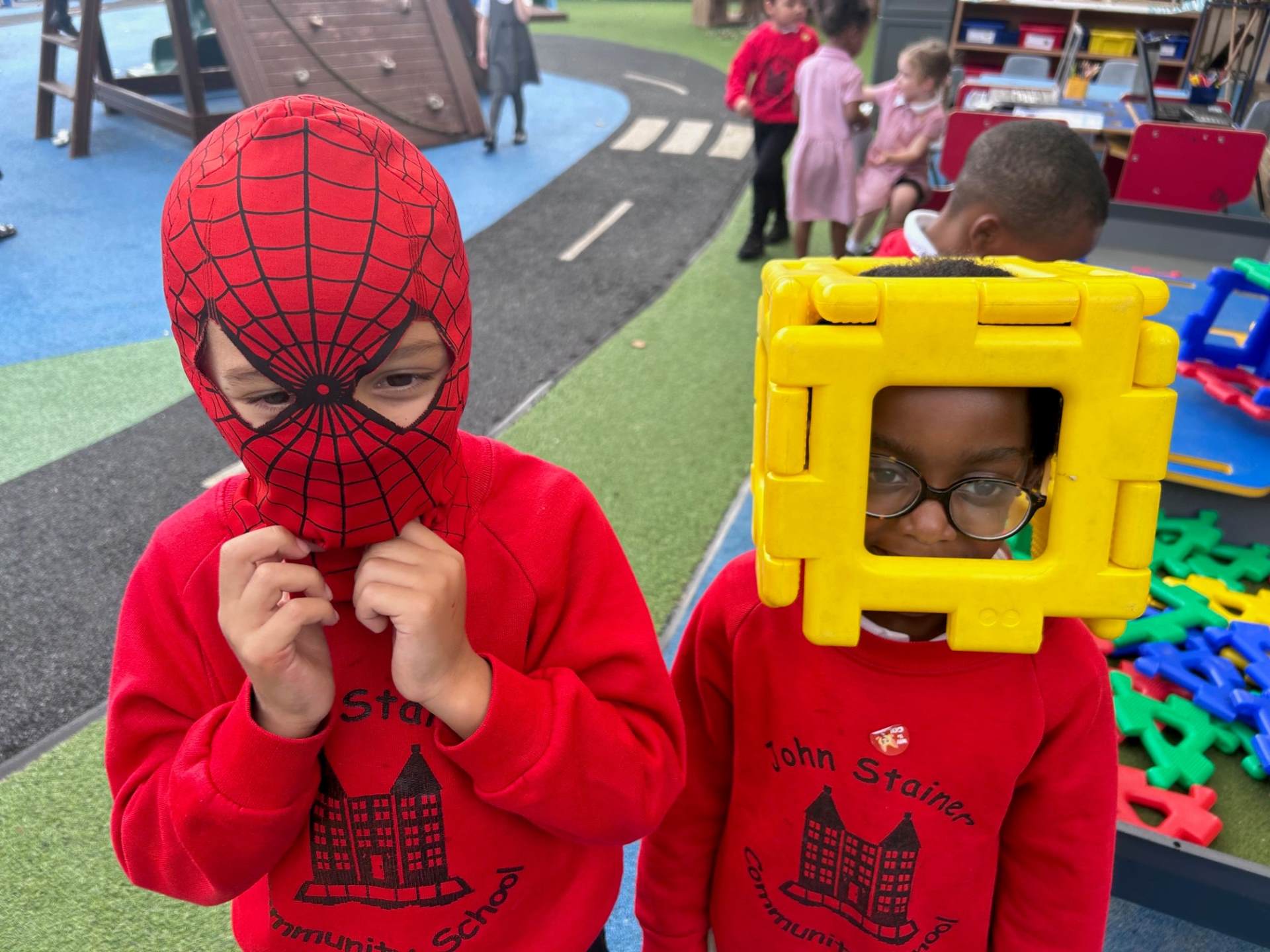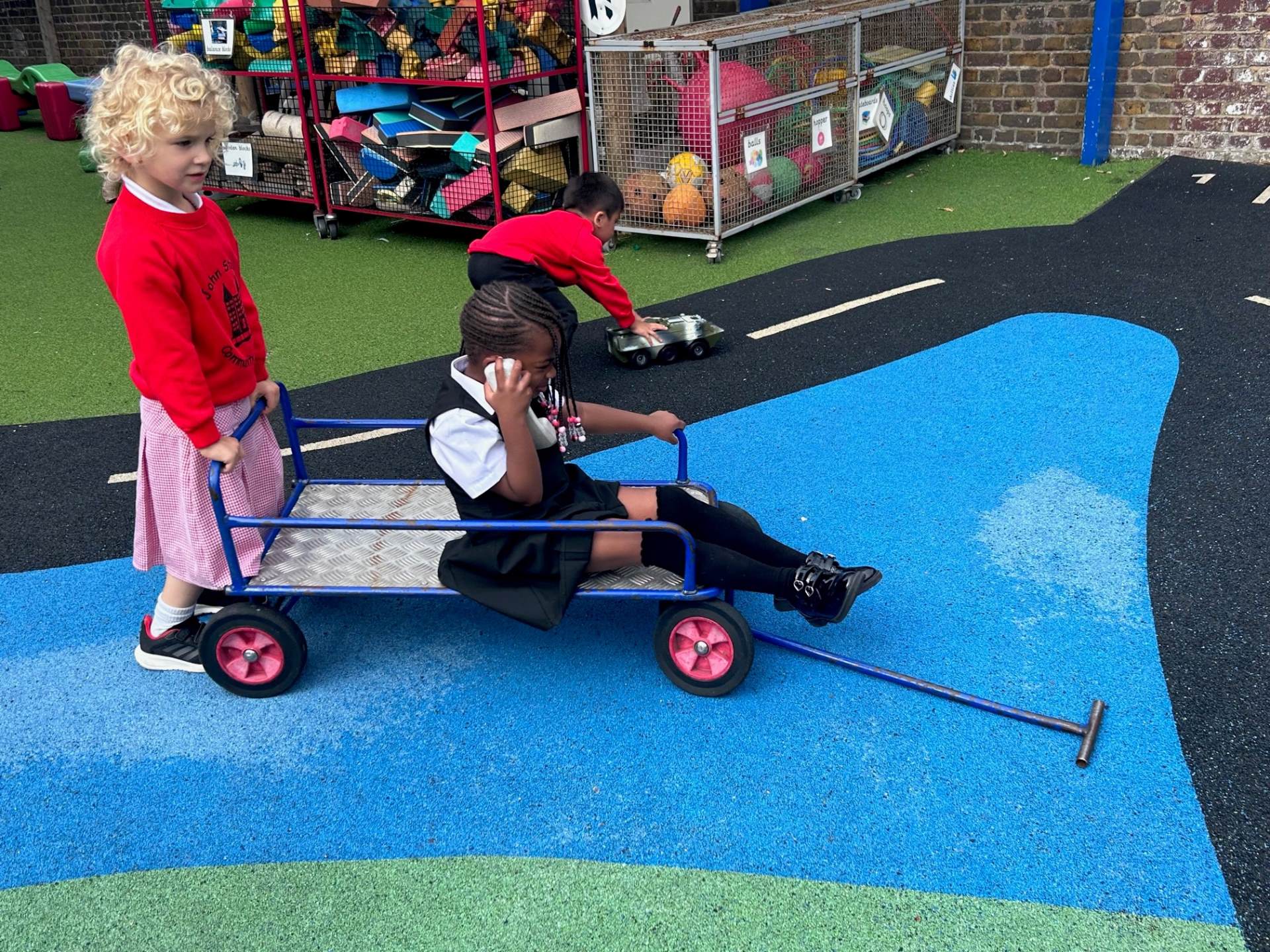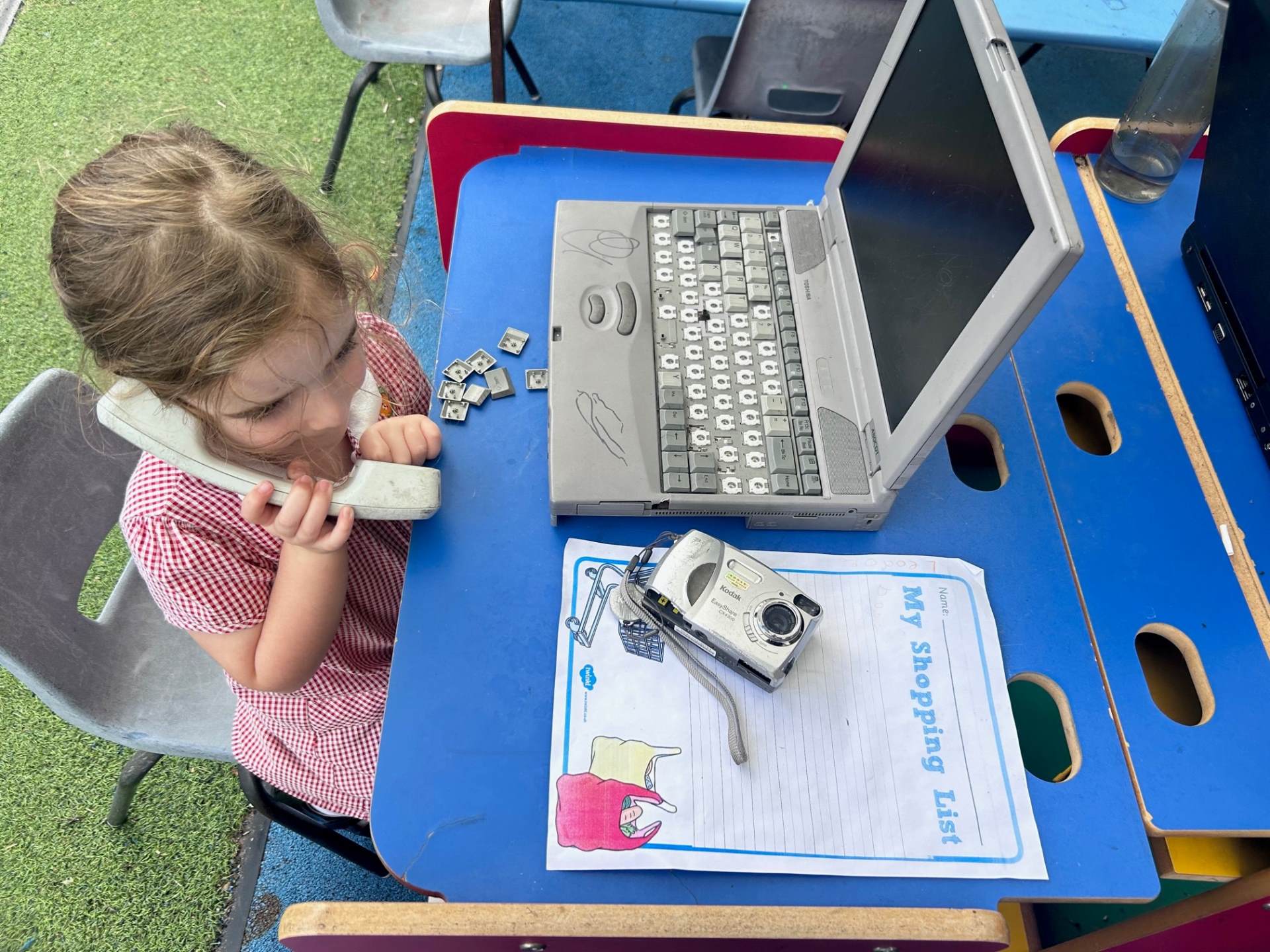Nursery - Curriculum Map

The curriculum for Nursery follows a two year rolling program so that our very youngest starters who will be with us for more than one academic year will not be repeating topics. The program is as follows:
|
Year 1 |
|||||
|
Autumn 1 |
Autumn 2 |
Spring 1 |
Spring 2 |
Summer 1 |
Summer 2 |
|
All About Me |
People Who Help Us |
Nursery Rhymes |
Journeys/Transport |
Animals/Dinosaurs |
The Sea |
|
Prime Areas of Learning
Communication & Language (C&L) Physical Development (PD) Personal, Social and Emotional Development (PSED)
|
|||||
|
(C&L) - Discussions about who we are and what we can do, our families and the people who are special to us. (PD) - Exploring our physical abilities and showcasing our skills. (PSED) - Introduction to classroom routines, class rules and expectations. |
(C&L) - Discussions around what we know about the different occupations of people who help us including fire officers, police officers, doctors, nurses. (PD) - Exploring our physical abilities and showcasing our skills. (PSED) - Developing our relationships with our peers and the adults in the nursery. |
(C&L) - Listen with attention to and join in with a range of Nursery rhymes. Use more complex sentences to discuss Nursery rhymes using word endings and begin to ask questions of others about their favourite rhymes. (PD) - Engage in Write Dance sessions and INPP Developmental Exercise Programme. Getting dressed for outdoor play independently. (PSED) - Discuss the morals within Nursery Rhymes.
|
(C&L) - Talk about the children's experiences of travelling. Discuss how we travel to school. Discuss which forms of transport we would use for different activities and why. (PD) - Use outdoor play equipment to practice physical skills. (PSED) - Discuss visiting relatives and friends that live far away. |
(C&L) - Children to share what they know about the animals for each weekly topic. (PD) - Continue to practice physical skills by mounting stairs, steps or climbing equipment using alternate feet and walking downstairs, two feet to each step while carrying a small object. (PSED) - Explains own knowledge and understanding, and asks appropriate questions of others.
|
(C&L) - To talk about what they know about sea creatures and describe them. (PD) - Sports Day preparations. (PSED) - Prepare for transition into Reception Class and moving to new schools. |
|
Specific Areas Of Learning
Literacy (L) Mathematics (M) Understanding The World (UTW) Expressive Art & Design (EA&D)
|
|||||
|
(L) - Find name card (recognising our names). Mark making and name writing practice. (M) - Reciting numbers using rhymes. Simple counting of objects. Numeral recognition. (UTW) - Learning to use the interactive board and computer. (EA&D) - Self portraits. |
(L) - Phase One Letters & Sounds Phonics Program. (M) - Finding shapes in the environment and using shapes to create pictures. (UTW) - Discussing how we celebrate festivals and comparing the similarities and differences in our experiences. (EA&D) - Rehearsals for the Nativity. Making decorations for Christmas. |
(L) - Independently choose books and discuss illustrations. Use scrapbooks for mark making and drawing and give meaning to them. (M) - Use rhymes as the basis for learning about time and positional language. (UTW) - engage in activities to experiment with cause and effect. (EA&D) - Use instruments to develop learning about rhythm through rhyme. |
(L) - Practice writing labels and short sentences by looking at a map of the local area and mark where they live and writing cards for Easter. (M) - Learn about using standard and non-standard forms of measure to work out the lengths of different vehicles. (UTW) - Float boats in the water tray and use different methods to move them across the surface. Look at different materials to see which float or sink. Use remote controlled cars. (EA&D) - Make junk model vehicles.
|
(L) - Phase Two Letters & Sounds Phonics Program. (M) - Learn about money and coin recognition. Use two and three step patterns. (UTW) - To show care and concern for living things. (EA&D) - using different materials and techniques to make a range of animal related creations. |
(L) - Children to be able to independently write their names using clearly identifiable letters and to name and identify letters and sounds. (M) - To learn about size and capacity. (UTW) - To be able to complete a program using the BusyThings phonics activities. (EA&D) - Making observational drawings of their new teachers. |
|
Year 2 |
|||||
|
Autumn 1 |
Autumn 2 |
Spring 1 |
Spring 2 |
Summer 1 |
Summer 2 |
|
Senses |
Traditional Tales |
Food |
Toys |
Minibeasts |
On the Farm |
|
Prime Areas of Learning
Communication & Language (C&L) Physical Development (PD) Personal, Social and Emotional Development (PSED)
|
|||||
|
(C&L) - Name and talk about different family members. Discuss different family structures. Children to talk about their families/special people and any particular experiences with them to the class. (PD) - Introduction to the outdoor area (safety rules) and climbing equipment. (PSED) - Introduction to classroom routines, class rules and expectations. |
(C&L) - Talk through the sequence of events in familiar stories with no picture prompts. (PD) - Discuss personal safety using a fireworks safety video to start the conversation. (PSED) - Discuss the moral lessons in the Traditional Tales.
|
(C&L) - Discuss understanding of where different foods come from. (PD) - Engage in Write Dance sessions and INPP Developmental Exercise Programme. Discuss understanding of which foods are healthy/unhealthy. (PSED) - Develop the confidence to share knowledge and experiences.
|
(C&L) - Children to engage in Show & Tell sessions talking about their favourite toys and asking relevant questions. (PD) - Practice throwing and catching skills, balance, squatting and rising unaided. (PSED) - Talk about how to share toys and play fairly - taking turns. |
(C&L) - To discuss characteristics, life cycles and habitats of minibeasts. (PD) - Encouraging the children to be independent in hand washing and regulating their temperature by taking off and putting on their own clothes. (PSED) - Taking care of the Butterfly Garden - how is that the same as how to take care of ourselves and others.
|
(C&L) - Children to share their knowledge and understanding about crops and growing them, farm animals and vehicles. (PD) - Sports Day preparations. (PSED) - Prepare for transition into Reception Class and moving to new schools. |
|
Specific Areas Of Learning
Literacy (L) Mathematics (M) Understanding The World (UTW) Expressive Art & Design (EA&D)
|
|||||
|
(L) - Find name card (recognising their names). Mark making and name writing practice. (M) - Reciting numbers using rhymes. Simple counting of objects. Numeral recognition. (UTW) - Learning to use the interactive board and computer. (EA&D) - Self Portraits - Looking at faces using mirrors, identifying features using simple questions e.g. "Where is your nose? or pointing and asking "What's that?". Begin to discuss the five senses. |
(L) - Phase One Letters & Sounds Phonics Program. Mark making in sand/gel/foam etc. Chalkboards Whiteboards and markers. (M) - Use estimation to calculate numbers of objects or heaviest and lightest objects. (UTW) - Looking at different plants associated with the season. (EA&D) - Using their fine motor skills to sew Binka mat shoes.
|
(L) - Sequence a recipe using images/labels. Begin to write lists. (M) - Weigh fruit and vegetables using balance scales to discover which is the heaviest or lightest. (UTW) - Share knowledge of foods from different cultures. (EA&D) - Use cooking utensils as instruments.
|
(L) - Children to make a name label for their bears and write invitations for the Teddy Bears Picnic. (M) - Working together the children will build towers and ramps for toy cars using language for height, speed and distance. (UTW) - Look at toys from the past and from now and use a range of wind up and technological toys. (EA&D) - Making hand puppets and windmills. |
(L) - Make an insect information class book. The children will choose an insect that they know about and write/copy facts. (M) - Use insect counters to compare two groups of objects, saying when they have the same number and separate a group of three or four objects in different ways, beginning to recognise that the total is still the same. (UTW) - Observe the changes in minibeast lifecycles. (EA&D) - Make papier mache insects for using the children's knowledge of their characteristics. |
(L) - Making transition booklets. (M) - Understanding ordinal numbers - first, second, third - for racing. (UTW) - Growing and caring for the vegetable seedlings. (EA&D) - Summer concert practice and performance. Making props and scenery.
|



